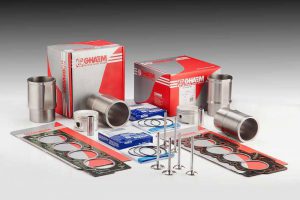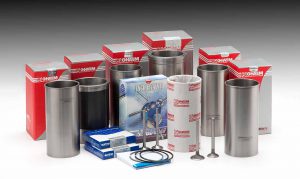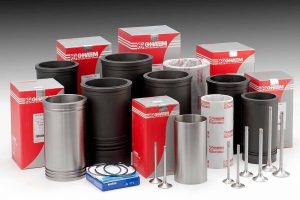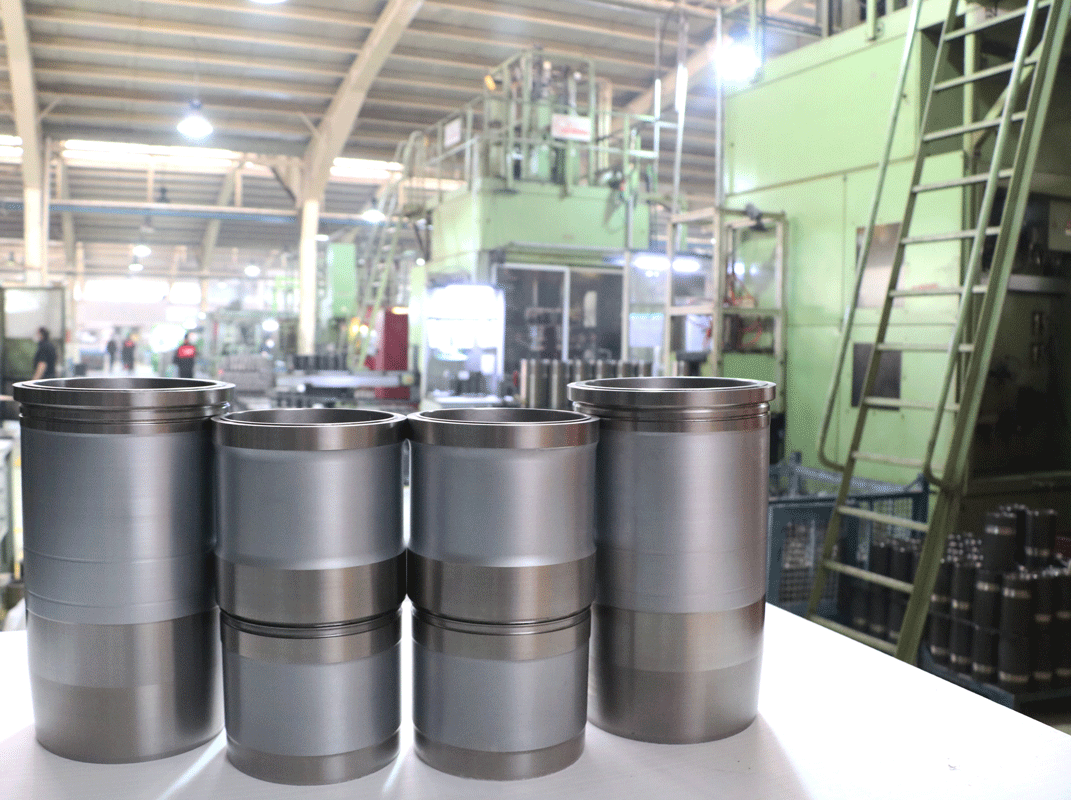cylinder liner is a hollow cylindrical part Which is placed inside each of the holes in the cylinder body. Inside the bush the piston travels. The thickness of cylinder liner is not determined by considering the pressure resistance. Rather, the necessary condition for determining its thickness is to obtain a stable casting surface .
cylinder liners should be designed in a way to avoid uneven expansion that deforms them due to heat.
There are 2 types of cylinder liners in Gasoline and Diesel engines :
1-Dry Cylinder liners that means cylinder liner is made integrated with cylinder block
2-Wet Cylinder liners that means cylinder liner is separated from cylinder block and install in the cylinder block.
Dry Cylinder Liner
After casting the cylinder block, the inside of the cylinders, which are smaller than the actual size of the cast, is carefully machined and then coated.
These cylinders, which are machined and coated together with the cylinder block, are called cylinders with integrated cylinder liner , either inseparable or dry cylinders.
The reason for using the term dry is that the wall of the cylinder with a certain thickness (about 3 mm) does not come into direct contact with the cooling water.
These types of cylinders are added to their diameter during the shaved repair, and inevitably a series of pistons with a larger size must be provided.
Wet Cylinder Liner
Recently, advanced engines use detachable cylinders with a thickness of 2 to 5 mm, which are in direct contact with the coolant. The term wet is more commonly referred to as In this method, it is not necessary to change the piston when repairing the engine.
Wet cylinder liners are prepared by the method to be resistant to abrasion force. They are cast from the center and the inner surface is hardened to a certain depth by the cementation method.
Thin non-metallic washers are used to prevent cooling water from penetrating to the crank case between the lower edge of the cylinder liner and its support.
In the case of engines whose cooling system is done with water, if the liner is in direct contact with water, it is called a wet liner, and if it is not in direct contact with water, it is called a dry liner.
The wet cylinder liner is easily removed from its position and can be replaced.
Wet Cylinder liners have about 4 to 8 mm thickness and are usually made of grey cast iron. To improve the liner with the engine block, in order to prevent water leakage from around the liner into the oil crankcase, one or two throats are considered at the bottom of the liner to place the rubber ring.
The following types of heavy and light machine cylinder liners of Ghaem Industrial Group are introduced:
Passenger Cars:

Peugeot Pars and 405 (GLX, GLI, SLX), Samand, Soren, Peugeot 206 and 206 SD, Peugeot 207
Agricultural Vehicles:

Volvo Engines, Scania Engines, Cummins Engines, Isuzu Engines, Iveco Engines, Benz Engines, Heno Engines, Duff Engines, Hovo Engines, Nissan Engines, Volvo Engines
Construction equipment:

Romanian engines, John Deere engines, Perkins engines, Zetor r engines
Commercial vehicles:

Komatsu engines, Caterpillar engines, Toyota engines, Cummins engines, Kawasaki engines, Alice engines
Read More
- Types of cylinder liner
- Wet cylinder liner Install
- Cylinder liner
- Installing Cylinder Liners
- Liner Failure Analysis and key points for how to work and repair the liner failure
- Products (types of diesel and petrol cylinder liner)
- What Is Cylinder Liner? | Material for Cylinder Liner | Function of Cylinder Liner | Types of Cylinder Liner
- How do I know When to Replace the Cylinder Liner?
- What is a cylinder liner?
- Investigation on the effect of honing parameters on cylindricity of engine cylinder liner
- What is a cylinder liner? Types of cylinder liners In gasoline and diesel engines

